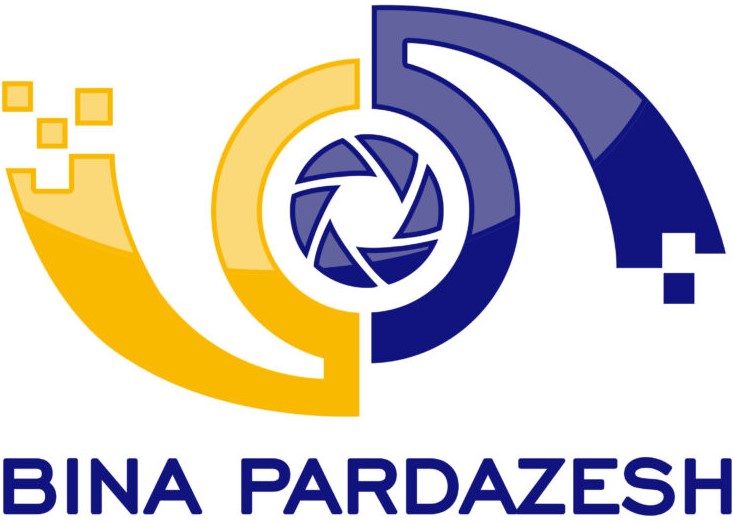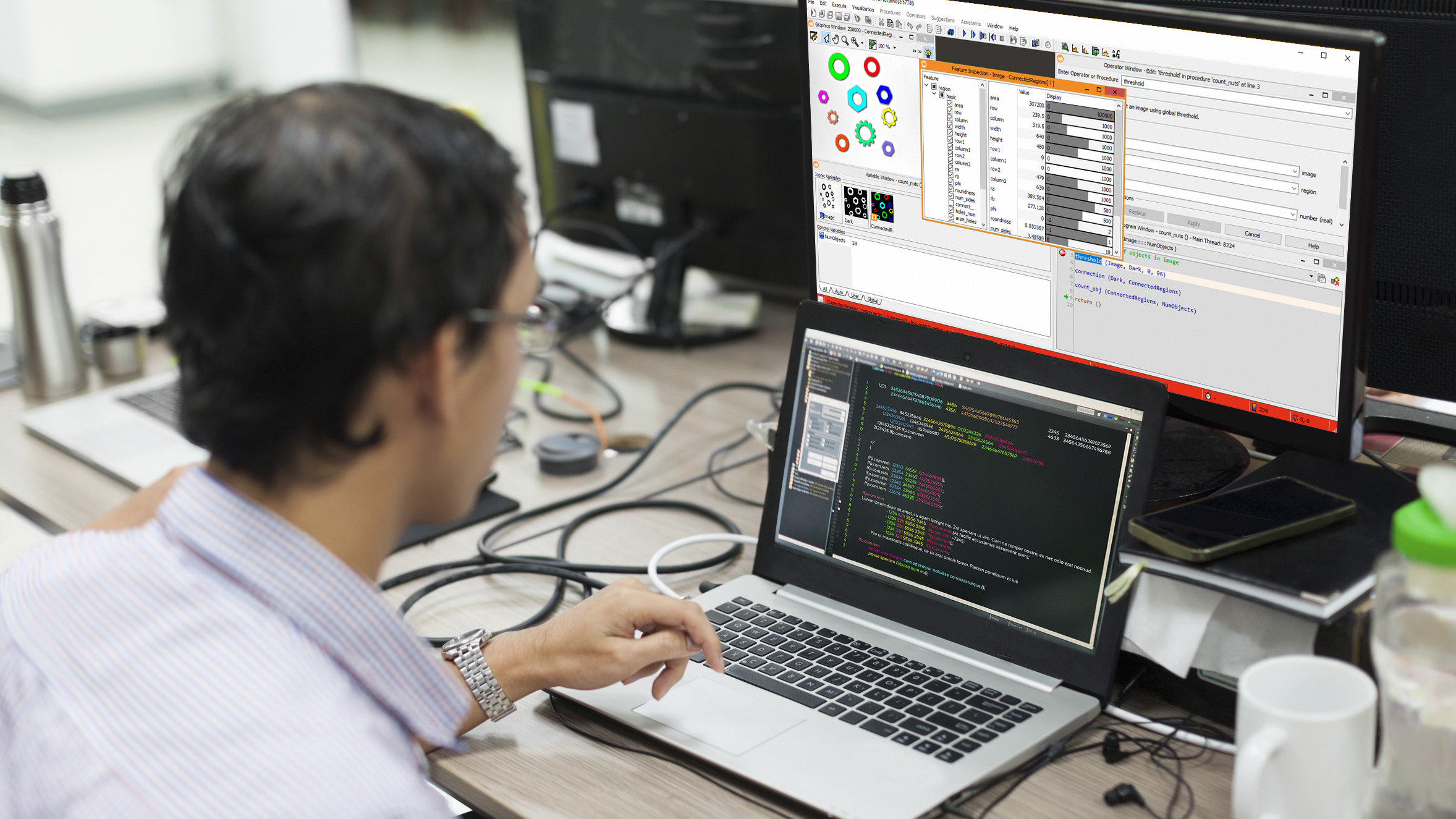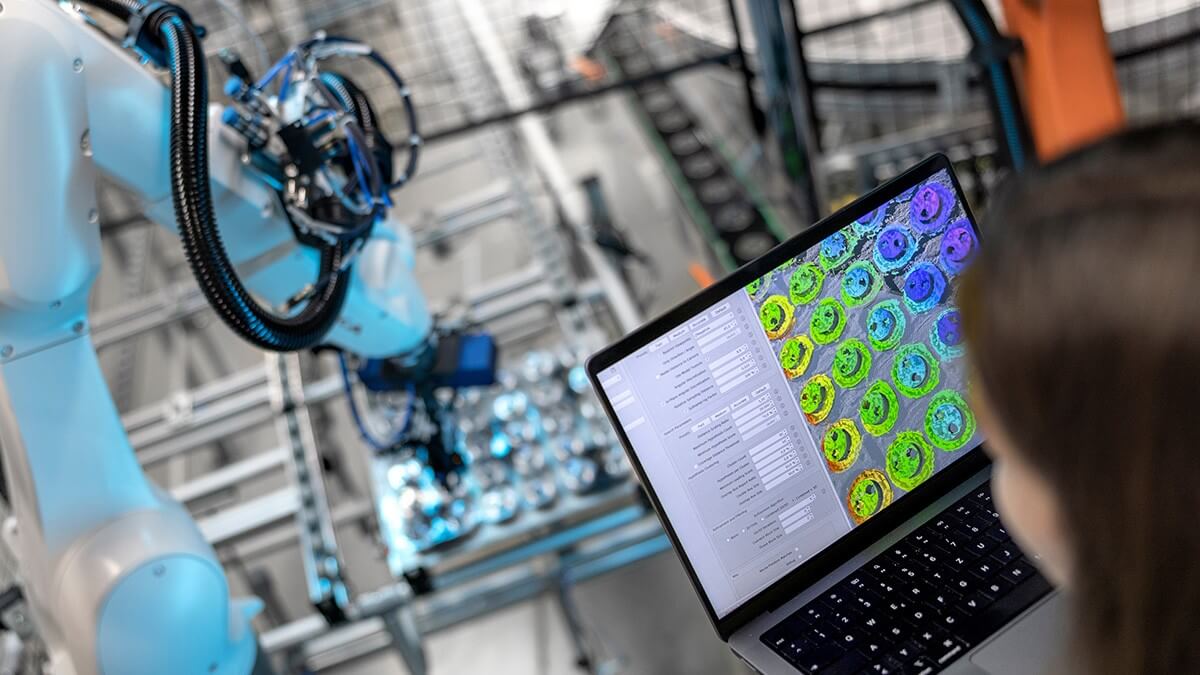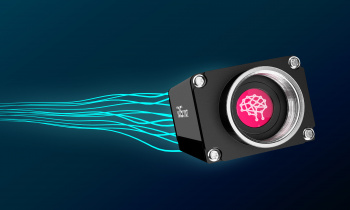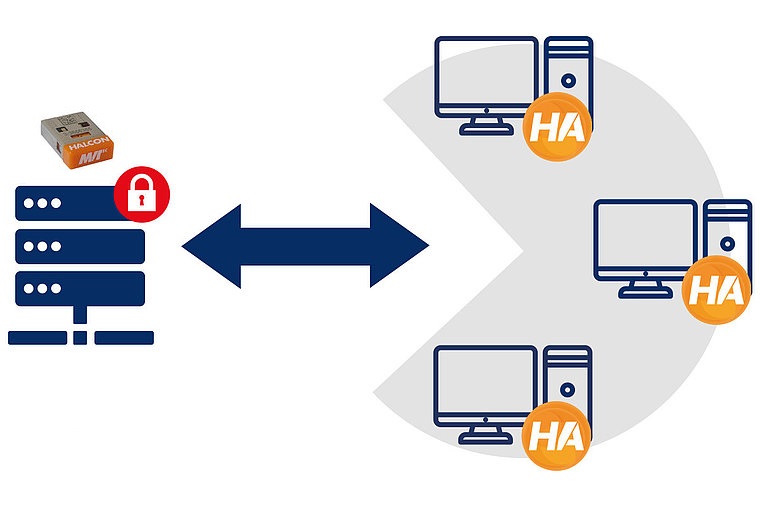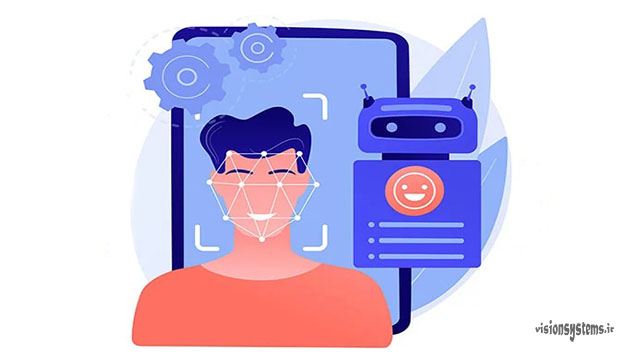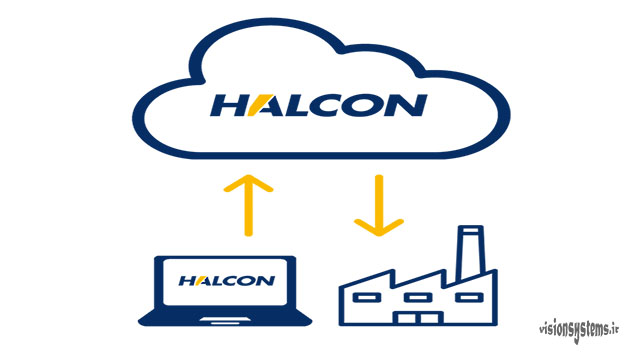Today, many industrial companies and factories around the world use machine vision systems. Initially, machine vision systems were executed only on computers, but with the advancement of technology in the construction of machine vision systems and image processing, smart cameras entered the market. Consequently, machine vision systems are divided into two main categories:
- Computer-Based Systems
- Machine Vision Sensors and Smart Cameras
For registration in the “Halcon Software Machine Vision Training Course,” click here.
1- Computer-Based Machine Vision Systems
In computer-based machine vision systems, a camera captures an image and sends it to the computer. The received image is then analyzed by image processing software on the computer. The image below illustrates a computer-based machine vision system designed to measure the dimensions of an industrial part. Each camera captures an image of one side of the industrial part, and these images are sent to the computer via communication cables. On the computer, the software processes these two images into a 3D image of the part, and the dimensions of the part are examined.
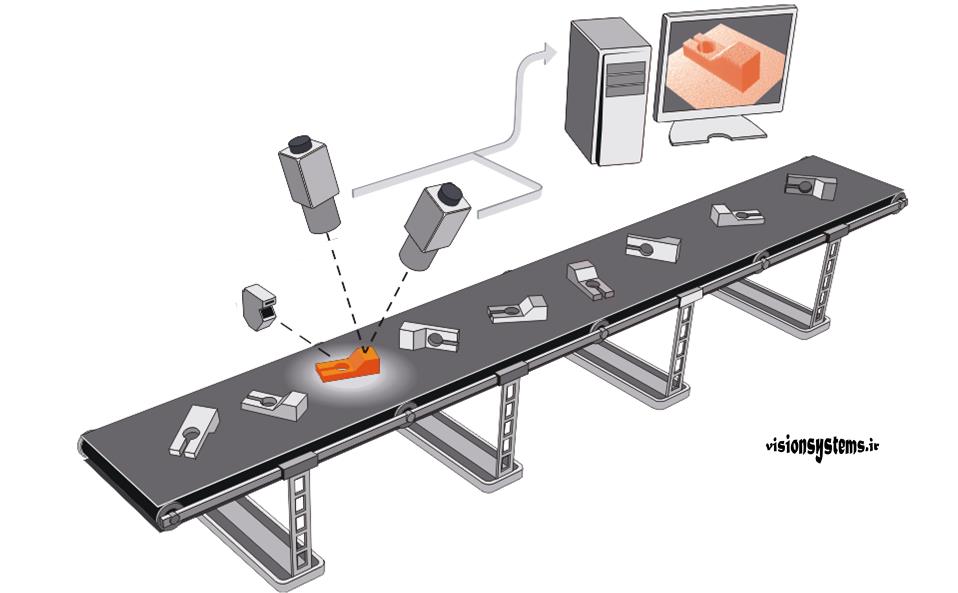
The cameras used in these systems are commonly known as industrial cameras. One of the most reputable manufacturers of industrial cameras is Basler. Designing a computer-based machine vision system requires the selection of equipment such as the type of camera, lighting, computer, etc., by machine vision engineers. Therefore, designing such a system requires more experience and expertise.
Software for Computer-Based Machine Vision Systems
As mentioned, computer-based machine vision systems use machine vision software for image processing. One powerful software in these systems is Halcon software. This software has a coding environment that allows the development of various machine vision programs. Halcon is a highly professional and comprehensive software for image processing and machine vision programming, catering to the diverse needs of programmers. Due to its capabilities, Halcon has gained popularity among machine vision programmers.
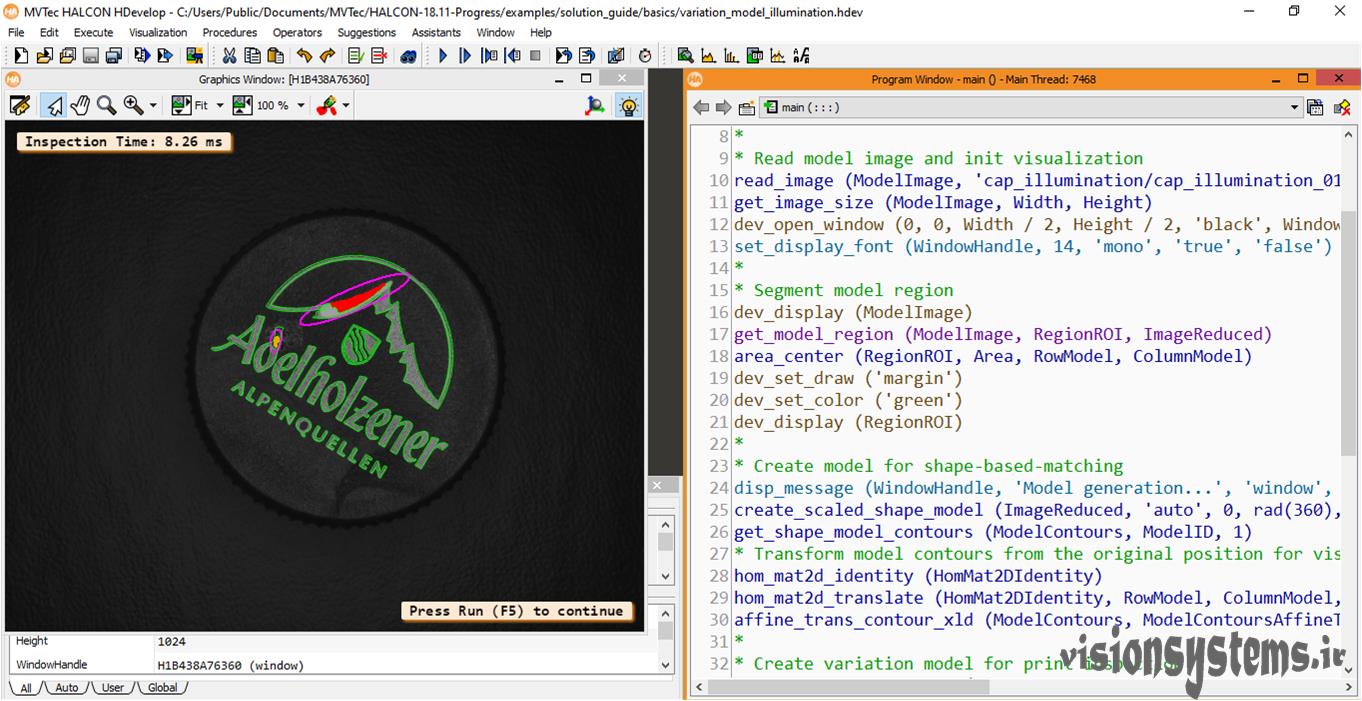
2- Machine Vision Sensors and Smart Cameras
Computer-based machine vision systems are relatively complex, and their design requires specialization and experience. If you are an electrical or IT engineer in a factory and need a machine vision system for reading barcodes, you don’t need to worry because you can set up a vision sensor with minimal training. For specific and simple applications such as reading barcodes, checking the presence or absence of an object, or simple measurements, machine vision sensors can be used.
Image Processing Sensors
In image processing sensor cameras, the lens, light, and computer are integrated into one unit. These sensors include a lens, camera, light, and processor. These cameras are called vision sensors, machine vision sensors, or image processing sensors. One reputable manufacturer of image processing sensors is Sensopart. In the image below, several examples of products from this company are displayed. As seen in the image, the camera has an internal light, and the lens is inside the camera. As mentioned earlier, these cameras have internal processors and do not require a computer to operate.
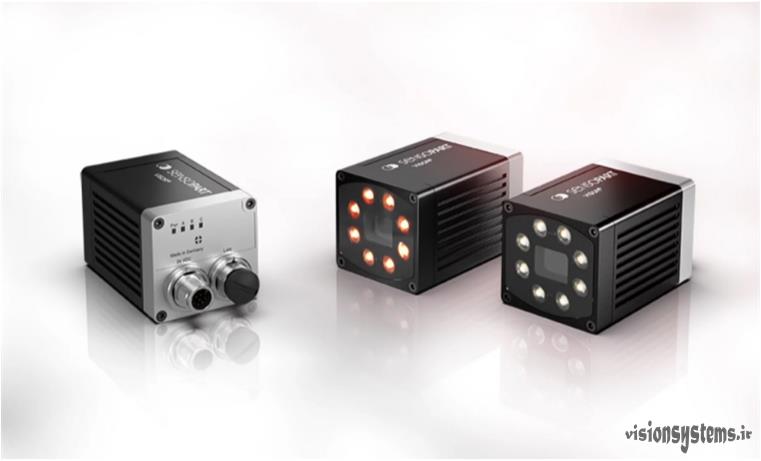
Software for Image Processing Sensors
Generally, companies that manufacture these cameras provide software that is easy to work with after minimal training. These software packages usually have limited features and can be used for simple projects such as measurements or part identification. The diagram below shows the user interface of Sensopart’s software. This software lacks a coding environment and is relatively easy to work with. It provides a set of simple tools to create a machine vision program.
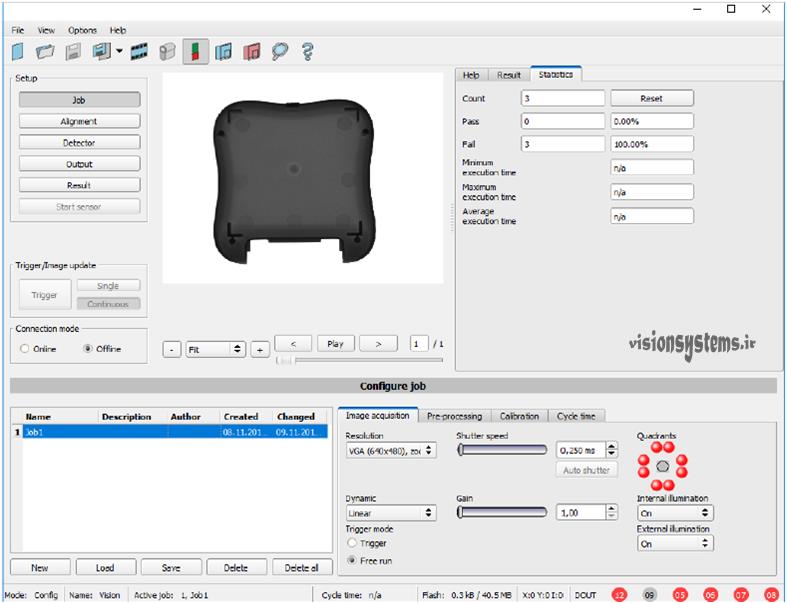
Intelligent Cameras
Machine vision sensors can perform simple tasks such as reading barcodes or detecting an object. However, a wide spectrum of machine vision projects requires more complex processing, which traditional sensors may not handle. To address this, intelligent cameras come into play. Intelligent cameras, like image processing sensors, are equipped with a camera and a processor. The key difference is that intelligent cameras can handle more complex processing and, if needed, utilize separate lenses and lights.
Intelligent cameras find applications in the identification, measurement, inspection of defects, and quality control of various industrial and medical products. These cameras typically have a resolution of up to 5 megapixels. Nowadays, line scan versions of these cameras are also manufactured, known as intelligent cameras or smart cameras, along with smart vision systems.
Differences between Intelligent Cameras and Image Processing Sensors
Intelligent cameras and image processing sensors share many similarities. Both have a camera and a processor, but intelligent cameras have more capabilities, allowing a broader range of image processing projects. The differences between intelligent cameras and image processing sensors can be summarized in two main points:
1. Intelligent cameras have more software capabilities for machine vision projects, enabling the execution of more complex processing.
2. In intelligent cameras, image capture and processing happen within the camera, but the lens and light can be selected separately if needed. This allows independent selection of lenses and lights in intelligent cameras, similar to computer-based machine vision systems.
Smart Cameras by Cognex
One of the leading manufacturers of intelligent cameras is Cognex. The image below shows a Cognex smart camera with an installed lens.
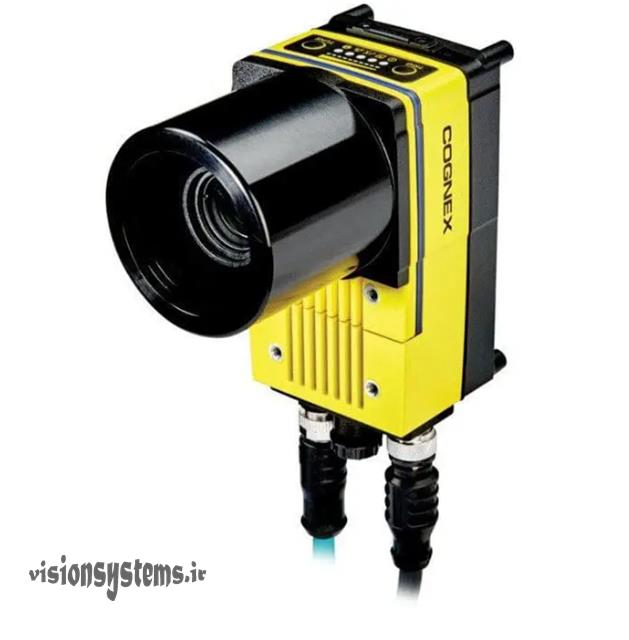
The Cognex software is depicted below. As shown, this software has more features and a more sophisticated interface compared to the SensoPart software associated with image processing sensors.
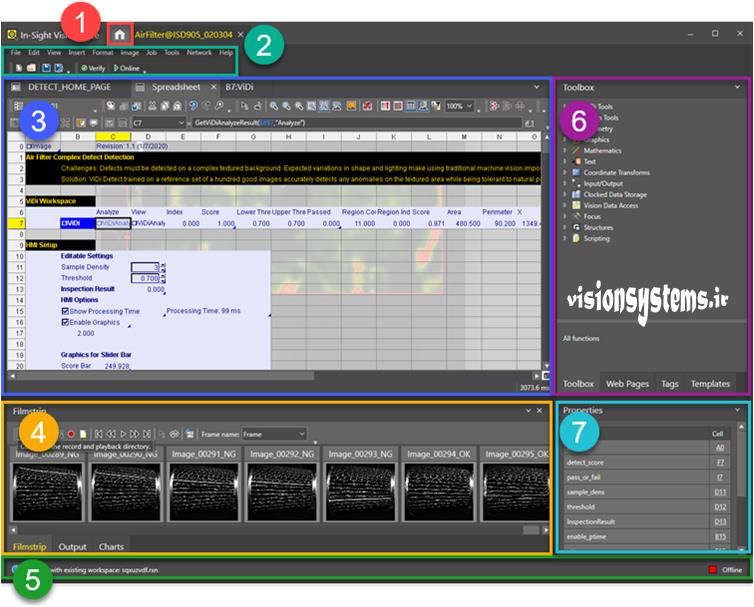
- The Home button is used to return to the main page of the software from different sections.
- The menu bar includes various settings for the software.
- This section provides a tabular environment for coding-like operations, allowing the writing of image processing programs using predefined tools.
- The output window provides access to results.
- The status bar shows messages, alerts, and the software’s working mode.
- This section contains various widgets that can be used for machine vision problem-solving.
- The parameter adjustment window for configuring image processing program parameters.
Pros and Cons of Intelligent Cameras and Vision Sensors
Intelligent cameras and machine vision sensors have the following pros and cons compared to computer-based systems:
Pros
- System design is more straightforward.
- Occupies less overall volume.
- Working with software for sensors and intelligent cameras is usually straightforward.
- Suitable for industrial environments.
Cons
- They only offer a limited range of resolutions. In contrast, computer-based systems can use various cameras with different resolutions and brands.
- There are limitations when using separate lenses and lights, and additional equipment may be required.
- Using these cameras restricts us to the software features provided by the manufacturer. In other words, we are limited to the solutions available in the software.
We hope this article has been useful for you. If you have any questions in this regard, please contact the Vision System team here.
Related Articles
